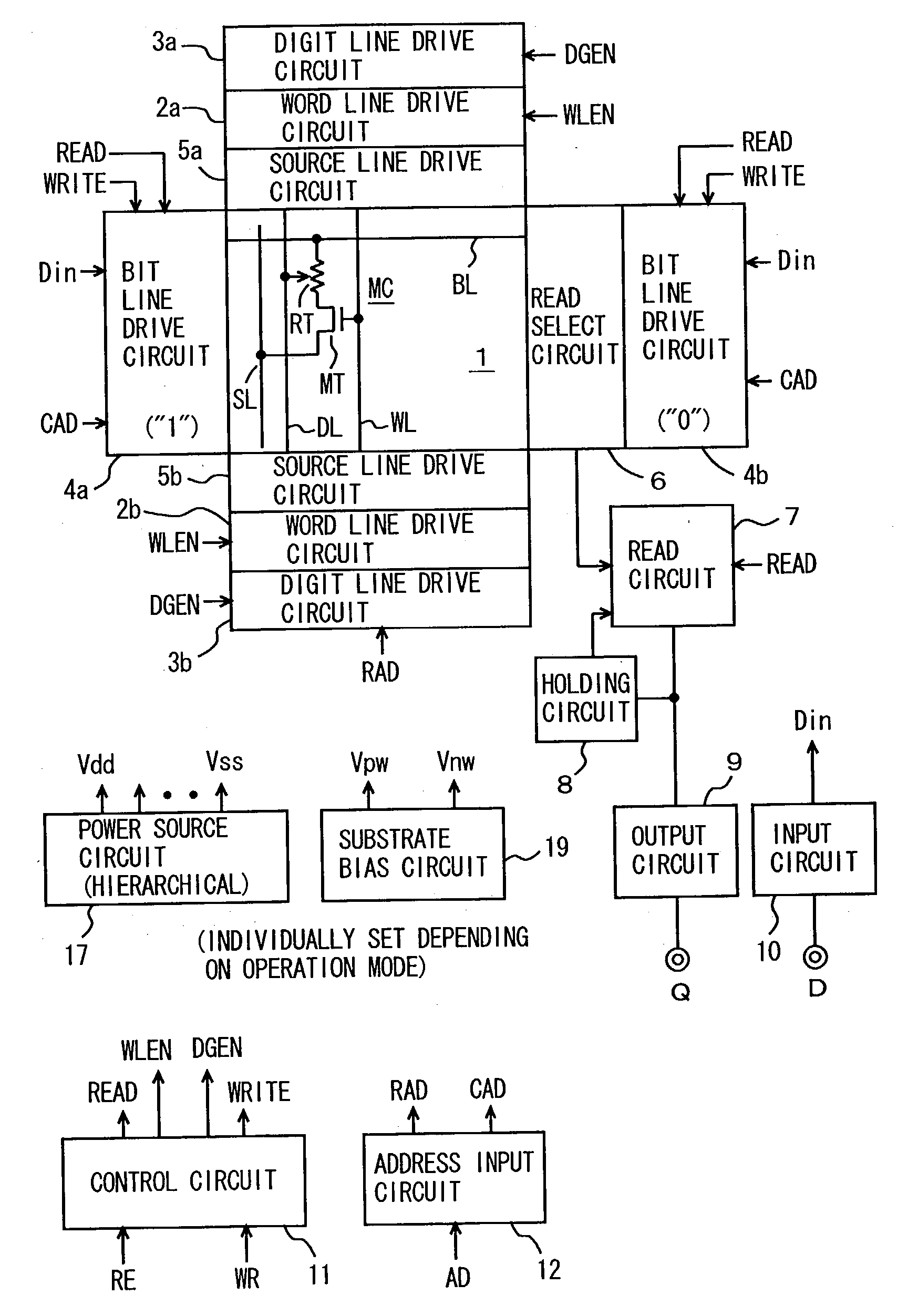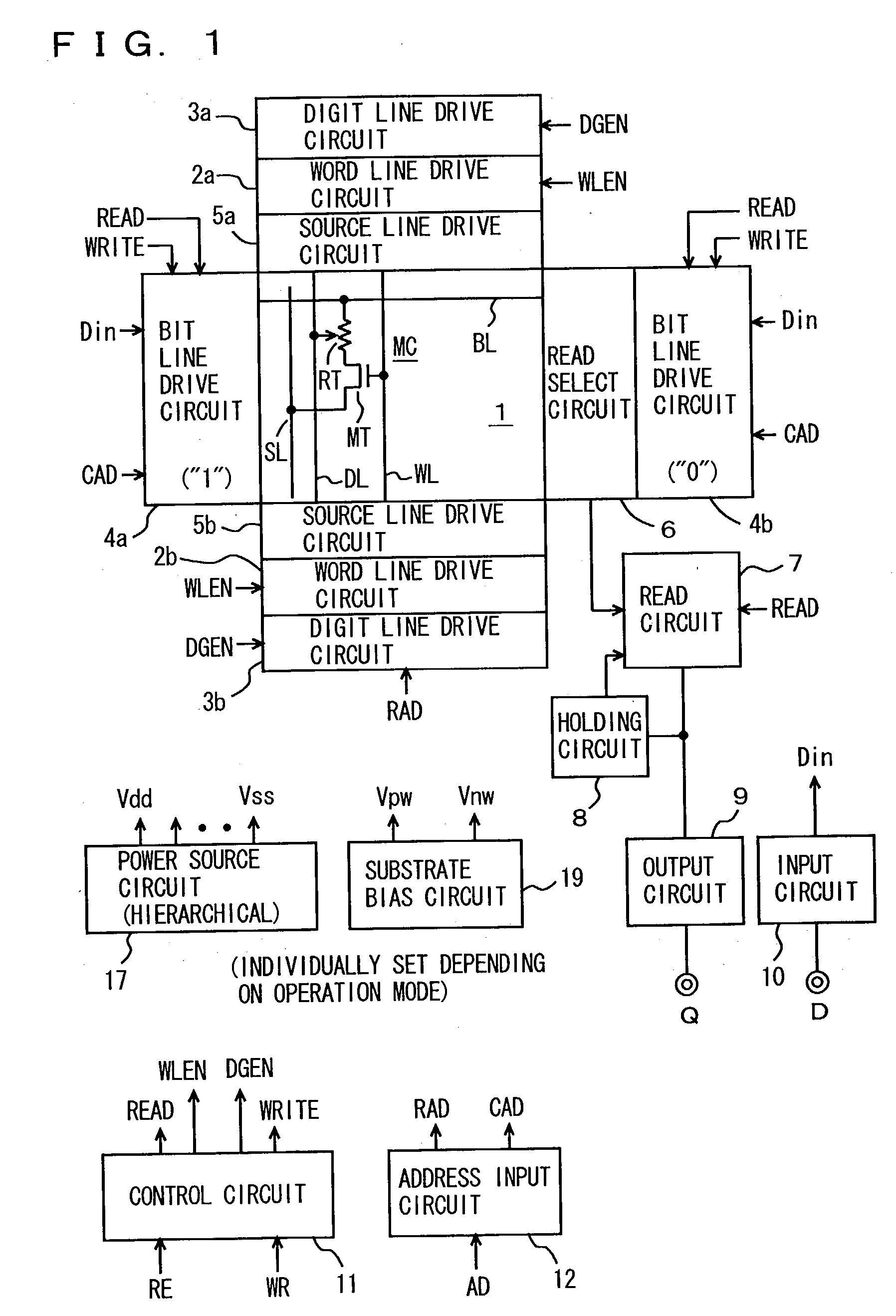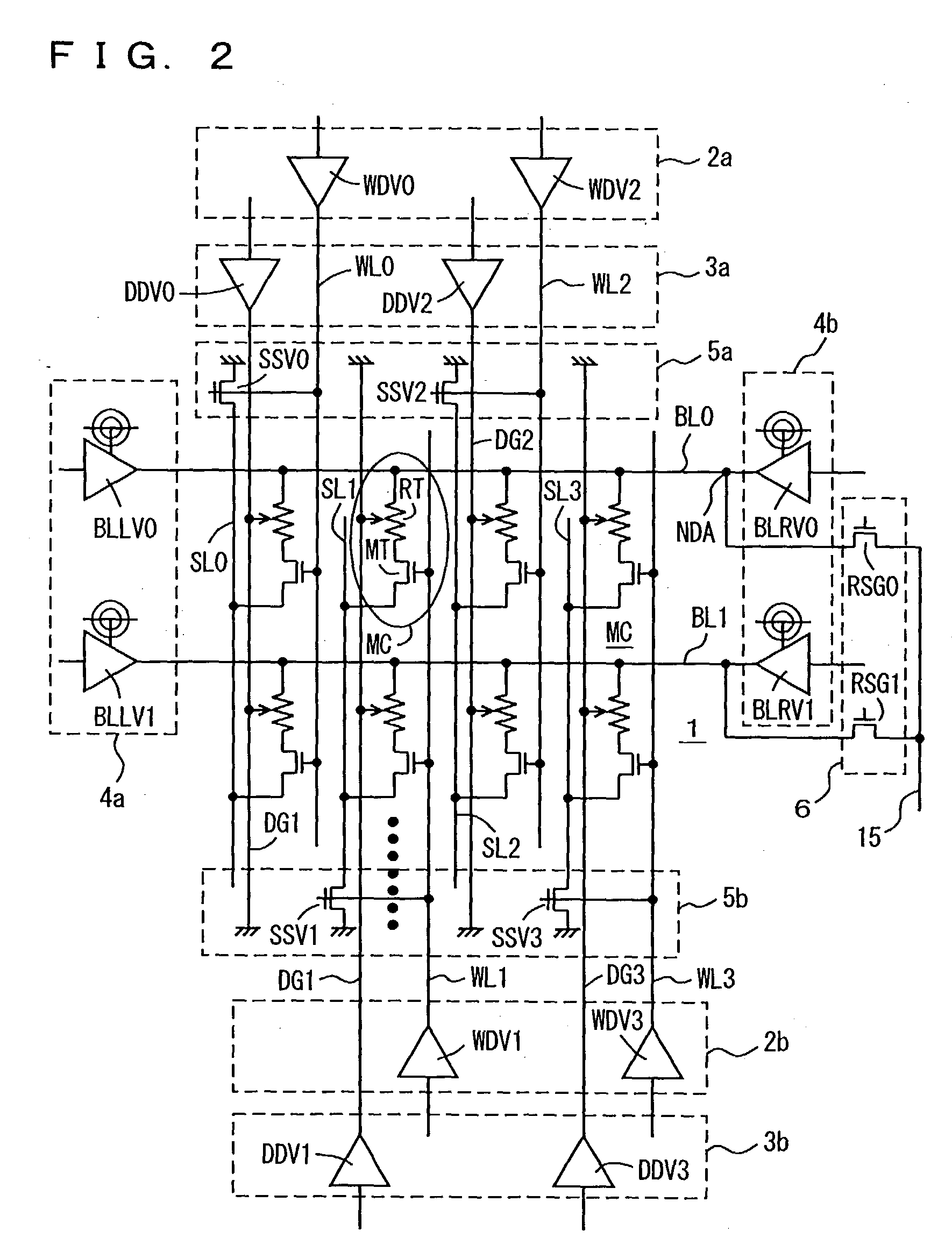Semiconductor memory device operating with low current consumption
a memory device and semiconductor technology, applied in the direction of information storage, static storage, digital storage, etc., can solve the problems of noise, inability to be neglected, and required data read operation sense current of the order of 10 ma
- Summary
- Abstract
- Description
- Claims
- Application Information
AI Technical Summary
Problems solved by technology
Method used
Image
Examples
Embodiment Construction
]
[0300] According to the foregoing description, in the memory cell data read operation, reference data is written, and then is compared with data read from the selected memory cell for determining the memory cell data. However, the constructions of the power supply and the substrate bias can be applied to the construction, in which a dummy cell is arranged in a memory cell array, and data of this dummy cell is compared with data from a selected memory cell.
[0301] The description has been given on the nonvolatile semiconductor memory device, in which induced magnetic fields cause polarization in the storage portion of the memory cell for nonvolatilely storing the data in accordance with the direction of polarization. However, the nonvolatile semiconductor memory device is not restricted to such MRAM, and the present invention can be applied, for example, to a nonvolatile semiconductor memory device, in which a phase of a storage material is changed between a crystalline state and an ...
PUM
 Login to View More
Login to View More Abstract
Description
Claims
Application Information
 Login to View More
Login to View More - R&D
- Intellectual Property
- Life Sciences
- Materials
- Tech Scout
- Unparalleled Data Quality
- Higher Quality Content
- 60% Fewer Hallucinations
Browse by: Latest US Patents, China's latest patents, Technical Efficacy Thesaurus, Application Domain, Technology Topic, Popular Technical Reports.
© 2025 PatSnap. All rights reserved.Legal|Privacy policy|Modern Slavery Act Transparency Statement|Sitemap|About US| Contact US: help@patsnap.com



